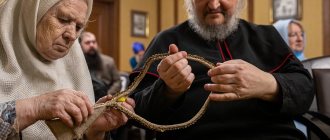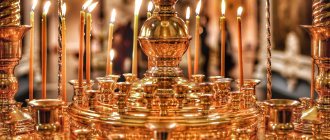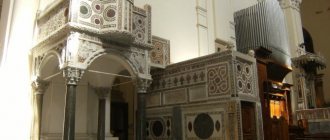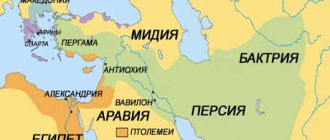"Save me, God!".
Thank you for visiting our website, before you start studying the information, please subscribe to our Orthodox community on Instagram, Lord, Save and Preserve † - https://www.instagram.com/spasi.gospodi/. The community has more than 60,000 subscribers. There are many of us like-minded people and we are growing quickly, we post prayers, sayings of saints, prayer requests, and timely post useful information about holidays and Orthodox events... Subscribe. Guardian Angel to you!
You can often see the following picture: a person saying a prayer is fingering something in his hands. They look like beads strung on a thread. They are called rosaries. It must be remembered that this is an instrument of prayer, and not an aesthetic detail.
Is this for monks or lay people?
The rosary is a purely monastic attribute, like a military uniform: jacket, shoulder straps, and so on. This is what monks have: hood, mantle, rosary, cross, paraman. Monasticism arose in the 4th-5th centuries after the Nativity of Christ as a result of the cessation of persecution of the Church from without and its emergence within - sects, schisms, disorder, and so on. People had a thirst for seeking an ascetic life for the sake of the Lord. Therefore, the rosary is such a spiritual sword, a reminder that monks are prayer books for the whole world. This is an integral part of even the appearance of monastics, an object that has not only practical, but also a certain symbolic meaning.
As for the laity, probably every experienced priest has encountered the problem when new believers strive to conform to some monastic stereotypes. Especially men: they have a desire to grow a beard and long hair, take a blessing on their rosary, and use them demonstratively during church services. We must immediately warn you that in this case there is a high probability of error and the wrong path. The manifestation of one’s aspirations and spiritual exercises is alarming. A person, without realizing it, can fall into delusion, a false self-image, conceit, pride, vanity, and so on.
When do we pray?
When does an ordinary person come to God? Most often this happens in a critical situation. People remember that there is One who is simply obliged to help. He created us. So we go to church, write notes, light candles and pray for help. We received help - and again we forget about God. Until the next unexpected life situation.
But is this right? God is waiting for us, He is always waiting and ready to help. However, such consumption on our part is not entirely correct. You need to not only ask, but also not forget about gratitude.
We are children of God. The father loves his children, he is ready to forgive them everything and always come to the rescue. Do you have a desire to help children if you don’t hear a simple “thank you” from them? You try for their sake, you do it, but they only consume, forgetting about the simplest word - gratitude.
God doesn't need our "thank you." We need to be able to be grateful to him. To wake up one day and give thanks for a new day, for the fact that God woke us up and gave us another day. Give thanks before going to bed for the day, it has passed, God gave it to us. In general, you need to be able to be grateful.
Can? Yes, but there are questions.
When people ask me whether they can use rosaries when praying, I usually ask: why would you count the number of prayers? Usually they answer me that there are monastic rules - the Pentecostal, the Centpentecostal, the Theotokos Rule. I understand that people now are all literate, they look at the Internet, read books with monastic content - and then apply all this in their lives. When answering, I try to delicately ask the person: do you read morning and evening prayers, the Holy Scriptures of the New Testament - every day? At least one or two chapters? Holy Fathers - after lunch, when your strength is no longer the same, your attention becomes dull?
If, after all of the above, you have the strength and time for prayer beyond that, you want to fulfill the monastic rule - God will help you. Take the rosary for as many links as you have - ten, thirty, one hundred - and read the Jesus Prayer. There are many interpretations of it, in the Greek tradition there are only five words in it: “Lord Jesus Christ, have mercy on me.” There may be options when the words “Lord Jesus Christ, Son of God, have mercy on me” are added; according to Seraphim of Sarov, “through the prayers of the Mother of God, have mercy on me” is added. The most important rule is to put your mind into the words of prayer and maintain attention.
What makes this prayer interesting, attractive and great is that it is very short, it is good to keep your attention on it, but it is very meaningful, can teach you a lot, save you from a lot and help in many moments of your spiritual life.
How to use rosary beads in Islam
Muslim rosaries are used to read short sayings from the Koran. However, no one can definitively answer what the correct name is for Muslim rosary beads, since they have different names among different peoples. For example, the Tatars call the rosary “dispe”, the Arabs call it “subbah”, and the Turks call it “tasbih”. However, all these names have one root, which came from the Turkic language, and it can be translated as “praise of God”, “praise to the Almighty”.
Muslim rosaries consist of 11 beads , symbolizing the number of parts of the prayer. Each part has its own requirement, for example, performing certain poses, movements and actions, reading formulas. The ritual of prayer follows a strict order of actions called rakat.
The following parts can be distinguished in the rakat:
- Intention.
- Praise.
- Standing on your feet.
- Reading surah.
- Bow from the waist.
- Bow to the ground.
- Certificate.
- Greetings.
- Execution order.
- Continuity of execution.
- Prayer-request.
When performing each of these actions, it is necessary to count one of the eleven beads on the rosary.
Beware of hypocrisy and delusion
I would like to warn our laity against Pharisaism, because it is very easy to turn into a person who “increases the opening of the vestments,” as the Savior says, denouncing Pharisaic vanity and pride. “But you, when you pray, go into your room and, having shut your door, pray to your Father who is in secret; and your Father, who sees in secret, will reward you openly” (Matthew 8:8). Read the Jesus Prayer, use the rosary, but don’t show it to others. There is a tradition of falling asleep with a rosary, when a person reads the Jesus Prayer before going to bed - this is very good. There is no need to take long rosaries, take the smallest ones, on your finger, and read.
I would really like to encourage believers who use rosaries: there is no need to count prayers or do arithmetic. “I read 150 yesterday, today I’ll read 250!” - this is not a sport. When this starts, you are very afraid for the person. It's not about arithmetic. St. Ignatius Brianchaninov, St. Barsanuphius of Optina and other holy fathers write very competently about this. They teach: you don’t need to engage in prayer, you need to pray to it. This is a living appeal to the living God. But one must be very careful with spiritual exploits.
Saint Ignatius has the following example: an ascetic came to him who did not experience hunger, and in winter he walked in one cassock and did not sleep for days. The saint asked: “How do you, dear one, pray?” He told, and the saint asked him to pray, as the holy fathers teach. A week later, the ascetic came in upset feelings with the question: “What have you done to me?!” He developed a huge appetite, he began to feel cold, and could not wake up in the morning. That is, the demon of vanity helped him, and when that monk began not to engage in prayer, but to pray, the demon moved away from the words of the Jesus Prayer, as if from fire, and everything changed. We need to tell the laity about this and warn them.
Let me emphasize: all of the above does not apply to monks. They have their own life, they obey the established rules, fulfill the blessing of the abbot and live according to obedience. In the world, you need to be very careful with your spiritual load.
Anyone can weave Orthodox rosaries
The rosary does not require that a person know any special prayer, and that the instrument for it be bought in some one right place. There are no requirements. So the question of how to weave Orthodox rosaries is quite acceptable and even has many instructions for the answer.
It is impossible to describe the whole process; as they say, it is better to see once than to hear a hundred times. Here are examples:
Weaving rope:
A quick way to weave a rope with large beads:
By leaving a comment, you accept the user agreement
An alternative to the usual rule
In the world, probably every priest has heard complaints from parishioners that they do not perceive morning and evening prayers - a person knows them so well, he is so used to them that attention is already dulled. The believer understands that he is simply reading the rule, and many at this moment even give up praying. There is a practice: replacing morning and evening prayers with the Jesus Prayer. There are ten to fifteen minutes - take your rosary, stand and pray. You can also read the Psalter as much as you have time - two psalms, and maybe two kathismas. Then you will have a new text every time, and even if you read in a circle, these texts will not have time to become boring. This relieves the psyche, trains attention, a reboot occurs, and you can pray like this for a month or two. After all, the traditional rule is a conditional thing, and, from the point of view of history, it was compiled recently.
General recommendations on how to use rosary beads correctly
How to properly use rosary beads in any religion if you need to solve health issues?
- In stressful situations, roll the rosary in the center of your palms.
- If you need to get rid of a headache, then you need to intensively knead the pads and phalanx of your fingers for 4 minutes using a rosary.
- If it is necessary to improve the functioning of the cardiovascular system, you should knead the rosary between your palms.
- To improve vision, you need to touch the beads with your fingertips.
- By passing the beads at the level of the nail phalanx of the index finger, you improve the functioning of the gastrointestinal tract. Using the middle finger, you can massage the spinal column, the ring finger - to tone the liver, the little finger - to relieve pain or a heart attack.
- If you use your thumb and forefinger at the same time, you can relieve anger or depression, and if you use your thumb and ring finger, you can increase the body’s immunity to magnetic storms and changes in atmospheric pressure.
- In order to normalize the functioning of all internal organs, you need to hold the rosary in your fist and knead it in such a way as to influence the nerve endings of your palms.
- When a runny nose begins, move the beads with your fingertips.
- If you quit smoking, then when the desire to take a cigarette appears, you need to use the rosary, performing meditation with beads for five minutes, then your desire will dull or disappear.
- You can use rosary beads to better memorize foreign words, poems, and various texts. In this case, you need to sequentially sort through the beads, repeating several times what you need to remember.
By fingering the rosary, you develop fine motor skills. Children can use rosaries, and they improve coordination and learn to count. The rosary is suitable for office workers suffering from spasms in the joints and muscles of the hands that arise from long, monotonous activities, and for people suffering from arthritis and arthrosis (for example, people in professions such as tailors, massage therapists, hairdressers).
Gotta be realistic
The task of a praying person, according to the holy fathers, is to “restrain the uncontrollable,” that is, our mind. Don’t let yourself get distracted, focus on prayer. The saints distinguished several stages of prayer: attentive prayer, mental work, heartfelt prayer, unceasing work - hesychasts constantly did this, but these are great things of a purely monastic level. A worldly person must be aware and not engage in fantasies about himself - that while living in the world, he can reach the level of a hermit who spent fifty years of monastic life on this. We must be realistic: look at these things calmly and use what we can handle. Set realistic goals and strive for them.
In conclusion, I would like to remind you: if a person prays only when he reads the rule, he is not praying at all. A believer should always have the memory of the Lord. Both in work and in all matters, one must turn to God, thank Him, ask for blessings - that is, live according to the covenant of the Apostle Paul: “Rejoice always. Pray without ceasing. In everything give thanks: for this is the will of God in Christ Jesus for you” (1 Thess. 5:16-18). The Jesus Prayer is for everyone, not just monks. This is the abridged Gospel, its quintessence. There is an idea that the five words of the Jesus Prayer are similar to the five stones of David in the battle with Goliath, which he collected from the stream when he went to battle - with firm confidence that God would give him victory over the enemy in an unequal battle.
There is no need for external paraphernalia, no need to count prayers. It’s better, as St. Theophan the Recluse writes, if you have time, set an alarm clock and pray for ten to fifteen minutes. I would recommend that laity use rosaries only for private, home prayer. After all, prayer and rosary beads are very secret, intimate things that are not made public.
Archpriest Konstantin Lisnyak
Original Russian rosary
In Rus', Orthodox Christians mainly used rosary beads. The lestovka is a woven leather ribbon sewn in the form of a loop. The ancient staircase has 100 simple steps and 9 “great” ones. They are located in 3 steps at the beginning, middle and end of the stairs. These steps represent the nine ranks of angels. The beginning and end of the ladder are marked by intervals without steps, symbolizing heaven and earth. “Great” steps divide the staircase into 4 unequal sections.
The first section has 12 steps. These steps symbolize the 12 apostles.
The second section has 38 steps. They represent the 38 weeks that the Blessed Virgin Mary carried in the womb of the Child Jesus Christ.
Up to the third great step there are 33 steps (the years of the Savior’s earthly life).
In the last fourth step there are 17 steps, symbolizing 17 Old Testament prophecies about Christ.
The tradition of using rosaries in Orthodoxy was founded by Pachomius the Great, an Egyptian monk who lived in the 3rd century. There is also information that Basil the Great and Anthony the Great used rosaries
Previously, every pious Christian had to go through the ladder 7 times (i.e., read 700 Jesus prayers). For this counting, movements were made under the paws - seven rectangles strung on a ribbon, according to the number of 7 church sacraments. This practical significance of movements is absent in modern ladders; they are done either symbolically, or the blades are simply sewn tightly to each other.
In addition to the usual staircase, there are “Virgin Staircases” with 150 steps. They are of later origin and were made to fulfill the “Mother of God Rule”.











